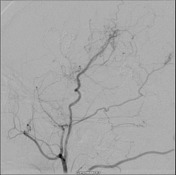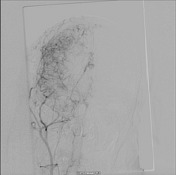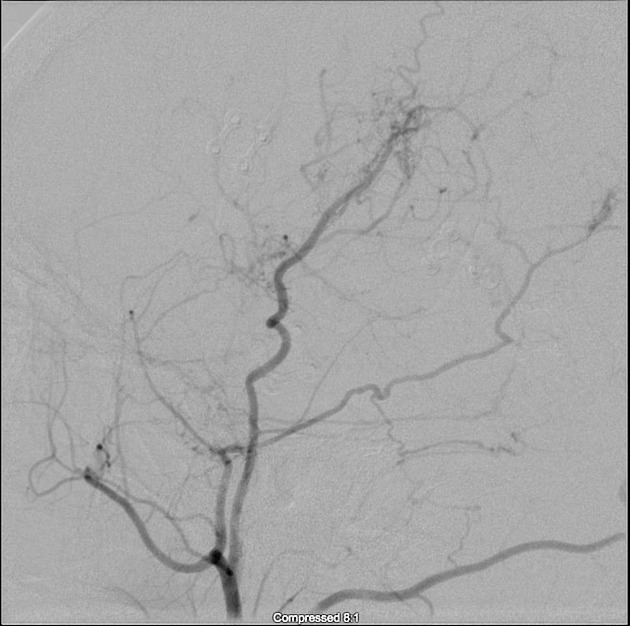Presentation
Initial presentation of stroke-like symptoms. This angiogram was a follow-up.
Patient Data





Contrast injection into the right common carotid artery reveals complete occlusion of right internal carotid artery in neck at the level of bifurcation. A small stump is identified. Occluded right internal carotid artery, middle cerebral artery, and anterior cerebral artery with prominent lenticulostriate arteries. Evidence of craniotomy and poor visualization of STA to MCA bypass may indicate previous encephaloduroarteriosynangiosis.
Moyamoya is seen with occlusion of bilateral internal carotid arteries at the level of the carotid bifurcation in the neck. Prominent lenticulostriate and thalamic perforating arteries noted.
Unsubtracted images included for orientation.
Case Discussion
Moyamoya is characterized by stenosis of intracranial arteries, usually involving the ICA, ACA, and MCA (Gross et al., Hemorrhagic and Ischemic Stroke). The disease typically plesents with prominent lenticulostriate and thalamic perforating arteries, which contribute to the "puff of smoke" appearance (Gross et al.). The incidence of moyamoya is higher in Asian-American populations (Gross et al.), and the patient presented in this case was a female of Korean descent.
Procedure performed and dictated by Rakesh Shah, M.D. Case courtesy of Rakesh Shah, M.D.




 Unable to process the form. Check for errors and try again.
Unable to process the form. Check for errors and try again.